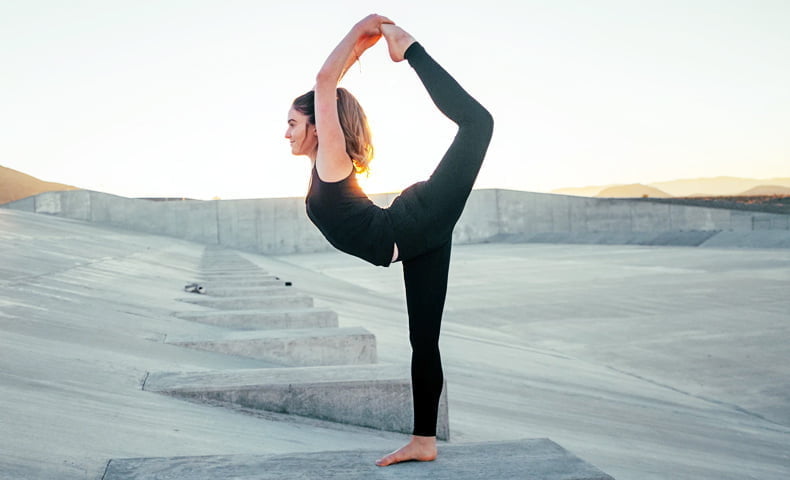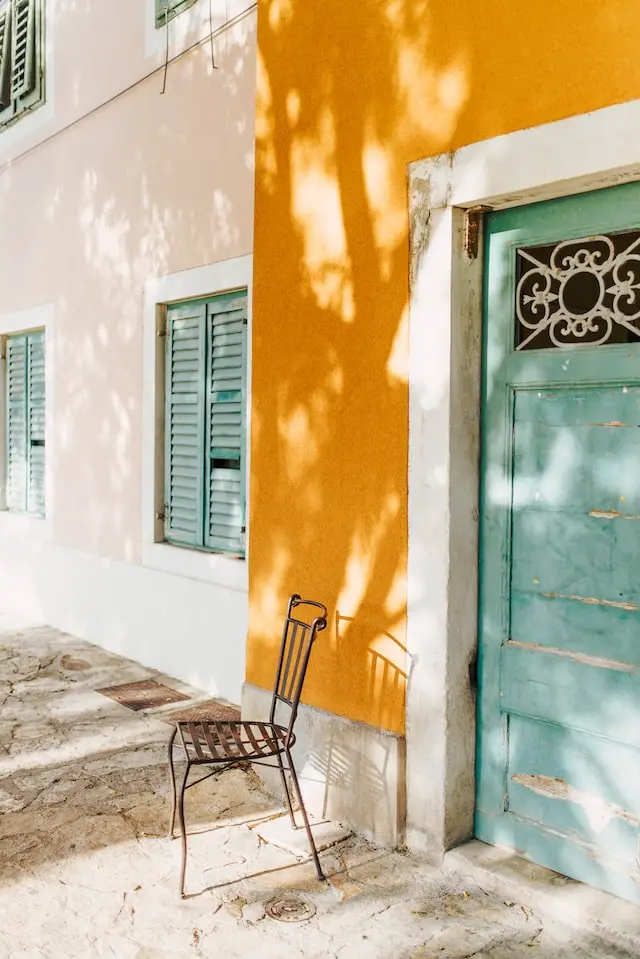From goat yoga, through aerial yoga and brogan- there are so many yoga types these days, with new methods being developed and marketed every year, that even experienced yogis get confused. Before starting the practice, finding the right yoga style can be a challenge on its own. So how do you find the flow that’s right for you?
Here we guide you through the most popular yoga types. These are most enthusiastically practised yoga styles around the world both in yoga studios and on yoga retreats.
Not every yoga types can suit everyone, so get familiarize yourself with those practices to find the best style based on your skills, fitness level and even your charisma.
Hatha yoga. Ideal for beginners.
Hatha is considered a gentle yoga that focuses on static poses, therefore, is perfect for those just starting yoga. It is known as a slow-paced and soft way of practising.
“Hatha” means is a generic description for any form of yoga focused on movement. It is build of two words “ha” (sun) and “tha” (moon) and is about balance these two energies. In the Western world, it is interpreted as balancing body and mind through the asana (yoga postures), pranayama (breathing techniques), mudra (hand gestures), mantra (chanting), shatkriyas and shatkarmas (cleansing techniques) and visualisation methods.
A usual Hatha yoga session will include breathing, meditation, and fundamental postures and it’s all about connecting your body and mind in order to increase awareness and stability.
If you are here to decide which type of yoga you should start from, “hatha” could be your ideal class choice.
Hatha yoga retreats
Hatha yoga is one of the most common yoga practices. It is also keenly chosen as a preferred yoga type during the wellness and wellbeing retreats due to being suitable to a wide range of abilities.
As a gentle practice, hatha yoga is often used across mindfulness retreats and meditation retreats. It is often supplemented by periods of silence, breathing techniques and even sound healing experiences like a gong bath to enhance relaxation.
Vinyasa yoga. Focusing on the flow.
Vinyasa can be translated as “placing something in a special way”, including yoga poses. Whilst Hatha yoga focuses on one pose at a time with a break in between, vinyasa flow chain poses together to make a sequence. Although classes may vary depending on teacher and her or his practice, you can expect to perform the sequence a number of times during a typical Vinyasa yoga class.
In most cases, there is no single philosophy, manual, or sequence that yogi must follow, which allows for individual personalities to come through. That’s why it’s important to find a teacher that you enjoy practice with and that their sequence relates to your objectives. If your first session wasn’t what you expected, try different teachers until you find one that better suits your needs.
Vinyasa Yoga Retreats
Vinyasa flow yoga retreat is usually available to all levels and experiences. Vinyasa classes take place early in the morning to warm up your body, improve blood circulation and shift energetic blocks. With a daily empowering practise of Vinyasa flow yoga, you will feel an increased level of strength and concentration.
Ashtanga Yoga. Stimulating and highly structured
Ashtanga Yoga is a strong and dynamic form of Vinyasa Yoga. You would follow a structured sequence of Ashtanga Yoga poses, which are done in constant flow (without any breaks) and at your own pace (although in rather fast-paced manner). You will move instantly from one pose to another, time with each inhales and exhales. The selection of poses and breathing technique is designed to focus your mind while enhancing flexibility and strength.
Since Ashtanga yoga practice requires good knowledge of poses and is quite physically demanding, it is most often chosen by advanced yoga practitioners as it brings maxim benefit when practised regularly, even daily.
Ashtanga Yoga Retreats
If you consider Ashtanga yoga retreat, but you have no yoga practice experience, make sure that your course is marked as “for beginners” so you can fully enjoy the experience.
Kundalini yoga. Most spiritual.
Kundalini Yoga is the most spiritual form of yoga. It requires divine commitment and discipline through consistency.
Kundalini Yoga embraces the physical postures, prana (breathing techniques), as well as chanting, meditation and shatkriyas and shatkarmas- methods of clearing and balancing the Chakra System. The life force, lying dormant in the seven chakras in the body, is regarded as a coiled-up serpent and Kundalini is the untapped energy, ‘curled’ at the base of the spine that can be drawn up through the body, by awakening each of the seven chakras. In other words, it unleashed the energy within you that will slowly elevate up your spine. Kundalini Yogis believe that balancing the chakras and unleashing the energy is the key to more fulfilment and happiness in your life by bringing the mind, body and soul in complete alignment.
Kundalini Yoga Retreat
Kundalini Yoga retreat is most often 7-8 day programmes, focusing on healing those 7 Chakras: starting from the root chakra (Muladhar) then, while concentrating on the auras of each chakra energy, unwinding and rising up to your seventh, highest chakra, The Crown (Sahasrara). Each day explores a new chakra to bring people into alignment with their real true selves.
Hot & Bikram Yoga. Detoxifying & Energetic.
Hot yoga often tends to be a flowing vinyasa style of practice in which the teacher instructs students in a series of linked poses. During class, the room is usually maintained at a temperature of 35 to 45 C, which will make your body profusely sweat. The intent is that the heat loosens your muscles2 and the sweat helps cleanse your body.
Bikram Yoga
Bikram Yoga is a highly structured form of hot yoga. Bikram Choudhury pioneered it and created a sequence of 26 poses with two pranayamas (breathing) patterns, each of which is performed twice in a single 90-minute class. Bikram yoga improves balance and posture, increases strengths and flexibility, helps relieves stress, detoxify the body (thanks to sweating). It also helps heal joint aches and build bone density, back problems and it even can help manage chronic health conditions like depression and insomnia.
Come to the class well hydrated. Before joining the class, drink up to 1.5-2 litres of water through the day. Bring a bottle with you for the session to sip when you need to, but don’t overdo it.
Hot Yoga and Bikram Yoga Retreats
Thanks to its numerous benefits is often used during weekend yoga retreats as a “mini wellbeing escape”. Hot yoga retreats are often held at the seaside, so after getting sweaty during classes and workshop you can jump for a swim in the waters of the sea. Classes are in heated rooms but sometimes can take outside at the beach.
Iyengar Yoga. Precision to Improve Posture.
Iyengar Yoga, named after its creator B.K.S Iyengar, who developed this method in the 1960s, tends to focus on precision and alignment in the postures. The practice is all about bringing awareness to each pose by focusing on details of your prana (breath technique) and asanas. It is excellent for building strength, stability, flexibility and awareness.
During classes, each pose is held for long periods to encourage a deeper connection to the breath and overall concentration. It is also often modified with props – blankets, belts and blocks etc. to support your body for the correct alignment and to ensure that asanas are practised safely.
Iyengar Yoga Retreats
Iyengar Yoga Retreats are great for beginners (although check if the specific ones are marked as such). If you experience yoga for the first time, you will be given adjustments to maximse health benefits. For the more experienced it’s an opportunity to deepen their practise.
Power Yoga. Active & Calorie Burning.
Power Yoga is most athletic from all yoga types. It’s based on the Ashtanga method but includes lots of vinyasas (series of poses done in set order without a break). It’s often treated as a workout or a differed form of a gym. Every power yoga class is different as it depends on teachers practice preferences. There will be no chanting or meditation, instead, the sessions will be quite intense to allow you to burn calories and keep you fit.
If you are looking for weight loss or enhance flexibility, strength and improve posture and mental focus, power yoga is for you. Bear in mind, you need to be relatively fit to really enjoy the class. This type of yoga is not recommended to practice during pregnancy or if you are diabetes.
Power Yoga Retreats
Due to its active nature power yoga is often part of various fitness retreats and boot camps. It’s chosen as a favourite yoga type among weight loss, activity and surfing retreats.
Restorative yoga. Before bedtime practice.
Similarly to Iyengar Yoga, restorative yoga is also based on the teachings of B.K.S. Iyengar. While much gentle and slower than his main practice, it involves longs, passive positions in a series of 4-6 soft, calming poses. Here you also will use a number of props to help you ease muscles, relax and release tension, as well as deepen the yoga experience.
Restorative yoga retreats
Although restorative yoga is not a leading yoga type of many retreats, it’s often offered as a supplementary experience and is typical practice before the bedtime or the dinner. It is also used more often at yoga retreats for seniors as well as meditation and cleansing retreats, where the ultimate retreat goal is to rejuvenate and re-balance.
Yin and Yang Yoga- Energy Balancing.
Yin and Yang refer to a complex relational concept in Chinese culture where opposite forces are seen as interconnected and counterbalancing.
Yin Yang Yoga blends two types of yoga into one practice, combining the benefits of passively holding yoga positions with more dynamic series and standing poses. Yin is more internal, passive, reflexing and downward, while Yang is more external, active, and rising.
Yin Yang Yoga Retreats
Yin Yang yoga retreats are held around the world, but they are especially popular across Europe, Morocco and Bali. Each yoga session or retreat is different but they focus on the Yin Yang ideology to bring balance into your life. They are often part of full and new moon experiences and retreats focusing on Ayurveda treatments, detox, re-balance and rejuvenation.
Have you tried any of the above yoga types? Let us know your thoughts in the comments below and tell us where in the world you’d like to go on a your next yoga retreat!





